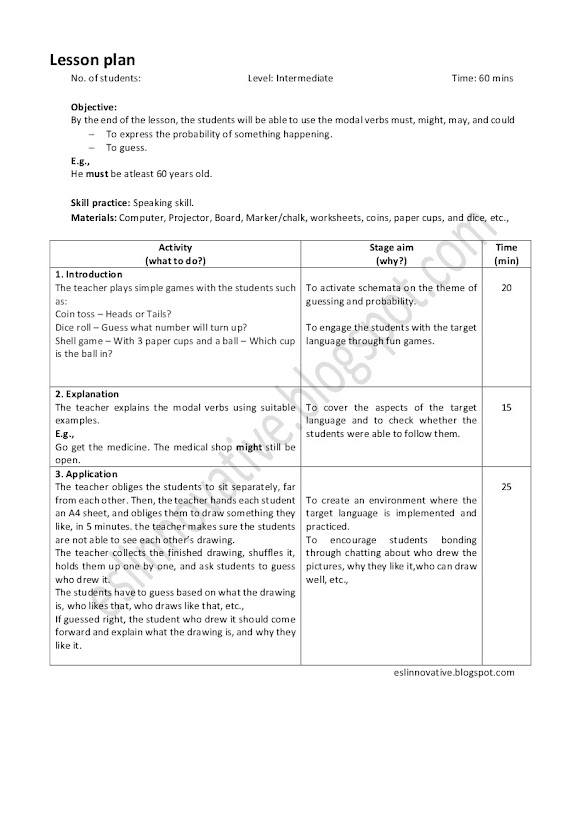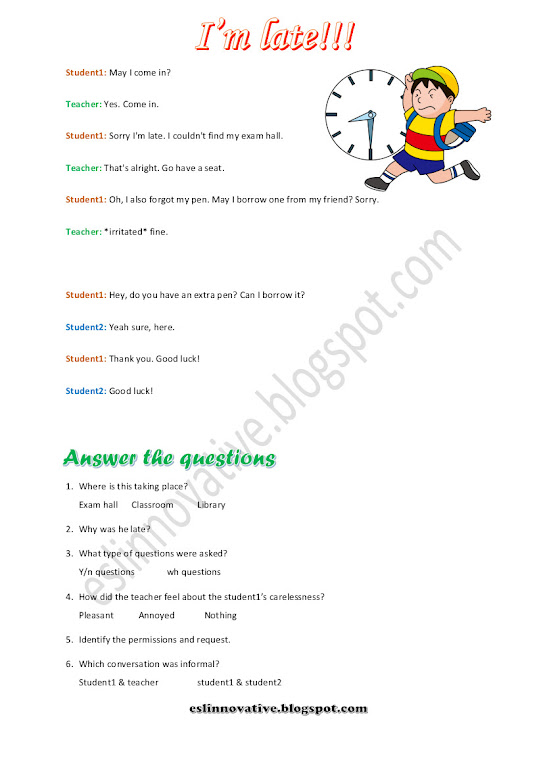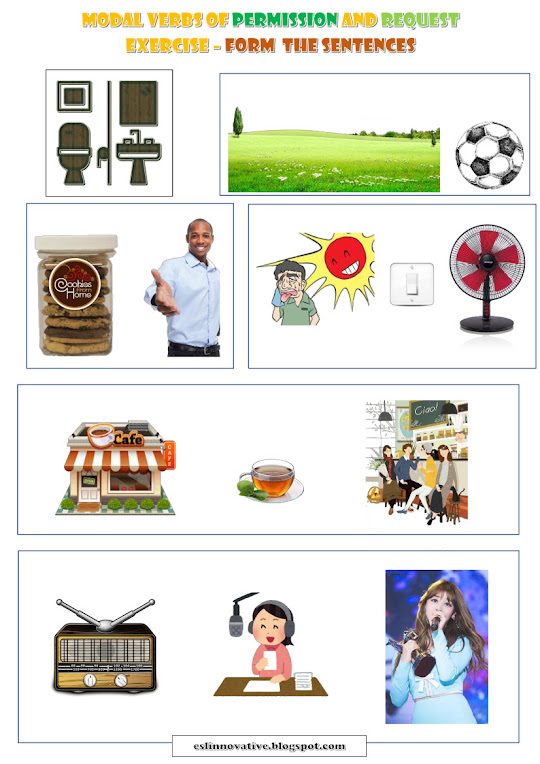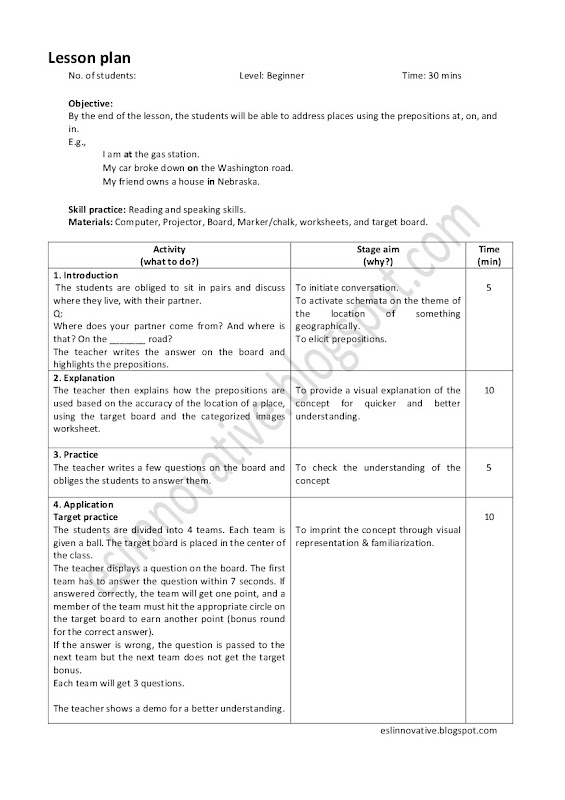The
influence of cartoons on kids will always be a concern to parents. Cartoons do
have positive and negative impacts on children. While they influence the
children’s language acquisition and cognitive ability to a great extent,
parents are concerned about some unwelcomed behavior the children learn from
certain cartoons.
So, when I
suggest to parents a list of cartoons that the children can watch at home, or
to a teacher who can use these cartoons during class, I have to make sure the
cartoons that I suggest are gems.
Here is a
list of 90s cartoons that teach no violence and encourages no bad intentions
or behaviors. They are safe, very imaginative, filled with life lessons, and
teach many more positive skills.
And
teachers, these cartoons are colorful, filled with vocabulary, and the dialogue
pace is perfect for students to learn the English language.
Through this
blog, I do not encourage children to spend a lot of time on cartoons. This is
just a guide to good cartoons that do not require parental guidance and
supervision. It is important to remember that too much of anything is poison,
so Parents should restrict the amount of time spent on these cartoons.
I’ve
categorized the cartoons according to the appropriate age groups.
3 & 4-year-olds
Dora the
Explorer
This is a
superfamous show premiered in the year 2000. It even has a movie adaptation.
Dora, a seven-year-old girl, embarks on various adventures with her monkey pal
Boots. She carries a backpack and a map for her adventure. The best part of
this cartoon is, it’s interactive. Well, it’s a one-sided interaction written
script but the children don’t have to know that. Songs, vocabulary,
interaction, this cartoon is a package.
Children
would enjoy this show. They’ll answer Dora’s questions, will sing along with
her, and will learn a lot from the adventure they had with her.
Franny’s
feet
Franny's
feet is a sweet cartoon that aired in the year 2004. Franny Fantootsie is a six-year-old
girl who is transported to a different world whenever she wears the shoes that
are in her grandpa’s shoe repair shop. The world she goes to depends on the type
of shoes she wears. If she wears snow boots, she goes on a snowy adventure; if
she wears ballet shoes, she dances ballet on stage. At the end of every
adventure, when she comes back, she finds a souvenir in her shoe from the place
she went to. She makes new friends in each world and helps them solve their
problems.
4 to 6-year-olds
Bob the
Builder
Bob the builder was aired in the year 1998. It was one of the most successful cartoons in
the UK. Bob is a building contractor. With his colleague Wendy and his talking
work vehicles, Bob can fix anything. From the show’s catchphrase “Can we fix
it? Yes, we can!”, we can understand what the show is about. The show develops
problem-solving skills, teaches teamwork, socializing skills (Bob is very
friendly.), and many other skills.
Make way
for Noddy
Make way
for Noddy is a British cartoon aired in the year 2002. Noddy is a taxi driver
in Toyland. He also owns a plane. He is portrayed as a curious, impulsive kid
who drives a taxi. He often gets into trouble but his friends always help him.
We have Big Ears, a wise old gnome who gives good advice to Noddy and guides
him towards the right path; we have Dinah Doll, a sister figure to Noddy, who
owns a shop; we have the goblin brothers, who are the reason why Noddy gets
into trouble most of the time and many more characters.
Oswald
Oswald was
aired in 2001. In a colorful, big city (literally named “The Big City”) with
anthropomorphic characters, lives Oswald – the blue octopus. Oswald is a very
optimistic, polite, caring, friendly octopus. He is blue, wears a hat, and
lives in an apartment with his dog Weenie. He is the best character ever
written in a cartoon. His best friends are his neighbor Henry the penguin, and Daisy
the flower. Oswald lives a peaceful life. He is always there for his friends,
and he never hesitates to help anyone. He plays the piano, he sings, he dances,
and he enjoys every moment of his life. He is still one of my role models. The
show is very engaging. It gives a peaceful and pleasant aura. When you watch
this show, you’ll feel extremely relaxed. This show gives me hope that there is
hope for humanity, and people are good. Yes, I am a big fan of this series.
The only
thing wrong about this show is, its short. It only has 26 episodes.
The show is
like a jackpot for vocabulary. Highly recommended.
6 to 9-year-olds
Dragon
tales
"I wish, I wish, with all my heart,
to fly with dragons in a land apart." is the chant you say to go on
adventures in the land of dragons. Siblings Max and Emmy find a magical dragon
scale which, when held and the chant recited, will take them to the Dragon
Land. There, they befriend the dragons - Ord, Cassie, Zak, Wheezie, and
the wise Quetzal, and go on many adventures with them.
This show won the Parent’s Choice Award several times and was
nominated thrice for Daytime Emmy Awards for Outstanding Children's
Animated Program in 2001, 2002, and 2003.
Harry and his
bucket full of dinosaurs
Adapted from
the book - Harry and His Bucket Full of Dinosaurs written and drawn by Ian Whybrow and
Adrian Reynolds, this show was aired in the year
2005. Harry has a bucket full of dinosaurs. To him, the dinosaurs talk but in
others' eyes, they are toys. Harry jumps into the bucket that transports him to
the Dinoworld where his dinosaur friends become dinosaur size! Like dragon
tales, he goes on adventures, solving problems, and having fun.
9 to 13-year-olds
(entertaining for teenagers and adults
too)
Scooby-doo,
where are you!
If anyone
says they don’t know Scooby-doo, they are either lying or very unfortunate.
Scooby-doo was one of the best things that came out of Hannah-Barbera and
Warner Brothers Productions. This classic show written by Joe Ruby and Ken Spears involves a group of friends Fred Jones, Daphne Blake, Velma Dinkley,
and Norville "Shaggy" Rogers, and their talking brown Great Dane Scooby-Doo solving supernatural mysteries and
mishaps.
Pokémon
"Pokémon?
That’s not violent free! The Pokémon fight each other!"
Well,
Pokémon is an exception. The good outweighs the bad, so it cannot be ignored as
a potential cartoon for children. I grew up watching Pokémon. If there’s an
anime that teaches you to chase your dreams and never give up on it, that’s
Pokémon. Although its origin is Japanese, the English dubbing team for this
anime has done an excellent job.
Evolved
from card games to video games, and video games to tv series, the Pokémon
series has been on and running since 1997. With over 1119 episodes (still airing),
23 movies, 8 TV specials, 25 side stories, and 896 Pokémons, it becomes one of
the biggest anime franchises in the animation industry.
Pokémon
does not teach or encourage violence. It teaches kids to treat animals with
kindness. I recommend you to watch the very first episode, and you’ll
understand its concept. It teaches the importance of friendship, trust,
compassion, willpower, and many more.
Honorable mentions
These cartoons
definitely would've made the list if it weren't for a few issues. Teenagers would
love these cartoons.
1. Phineas and Ferb (the characters use
construction tools without supervision.)
2. Kid vs Kat (the cat is an alien that
wishes to destroy the earth.)
3. The Powerpuff Girls (violence)
4. Code name: kids next door (some
unwanted behaviors)
These series are available for sales on DVDs in their respective official websites or in Amazon.
I grew up watching
these cartoons. I wrote this blog with such nostalgia. What was your favorite
cartoon? Let me know in the comments.















































